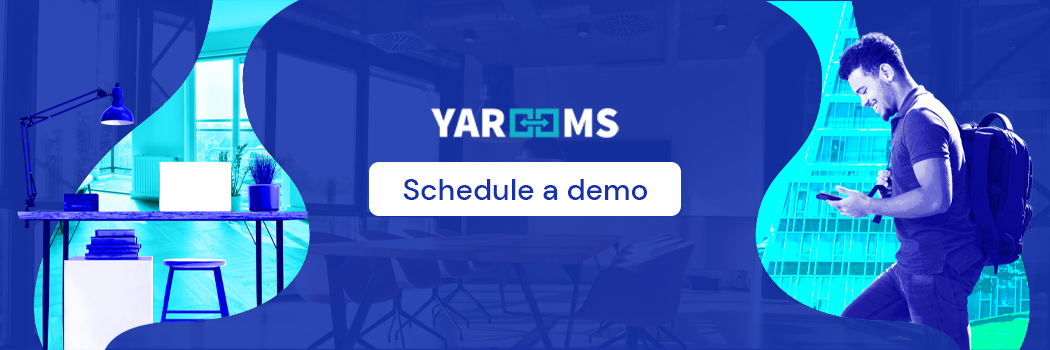Gone are the days when artificial intelligence (AI) was merely a buzzword; today it is a transformative force reshaping the modern workplace. In industries around the world, AI tools are fundamentally revolutionizing the modern workplace from the ground up.
From intuitive chatbots to virtual assistants that are seemingly always one step ahead of our needs, these smart tech tools are boosting productivity and creating smoother workflows for us all. Let's talk about how AI is completely changing the way we work – and how we feel about it!
TL;DR:
- AI is revolutionizing workplace technology, automating tasks, processing data quickly and facilitating smarter decision-making across industries.
- Chatbots and virtual assistants have become indispensable tools that provide instant support, automate complex processes and reduce human error, ultimately enhancing productivity and efficiency.
- Integration of AI into workplace technology opens up new opportunities for innovation, personalized experiences and predictive analytics that drive growth and competitiveness.
- While there are challenges, such as privacy concerns and skills gaps, the successful integration of AI technologies in the workplace demonstrates the transformative potential of AI to improve both business operations and the employee experience.
AI in Workplace Technology: A Brief Overview
Forget manual processes – AI is shaking things up by automating tasks, processing data at lightning speed and helping us make decisions in what seems to be the blink of an eye. No wonder we can’t stop talking about it!
But the impact of AI goes beyond simplifying tasks. When companies integrate AI into their operations, they open up countless opportunities to grow, foster collaboration and gain a competitive edge in the digital workplace. Adopting AI isn't just about automation, it's about innovation and using technology to lead organizations into a future of unlimited possibilities.
Used correctly, AI-powered tools can support us exactly when we need them, tailoring the experience to us and even predicting what's coming next. If that sounds too good to be true, let’s take a closer look at how that works next!
Interested in the topic? Listen to our podcast episode AI in the Workplace: The Good, the Bad, and the Ugly.
The Diverse Applications of AI in Today’s Workplaces
AI technology is a bit like a Swiss army knife for streamlining processes and increasing efficiency across different industries. AI not only automates repetitive tasks such as data entry and scheduling, but also helps us analyze data so we can make better decisions. For example:
- In customer service, AI call center software and chatbots offer customers immediate support around the clock, improve response times and ramp up customer satisfaction levels. Tools such as Crisp’s AI chatbot are also characterized by their scalability, as they can handle multiple customer interactions simultaneously without compromising on quality.
- Virtual assistants help office workers manage their schedules, reminders and reports without the need for human intervention. Virtual assistants can also be customized to meet the specific needs of individual users and teams. By integrating them with other applications, they can access and manage data across platforms, creating a central hub for information and communication.
- AI-powered tools also improve recruitment processes. One of the primary ways to achieve this is by quickly reviewing CVs. In the past, recruiters spent countless hours sifting through piles of CVs to identify the best candidates based on certain criteria. With AI, this task is automated, saving time and resources.
- In healthcare, AI algorithms meticulously analyze medical images to make accurate diagnoses and create personalized treatment plans. One of the key benefits of AI-powered image analysis is the ability to detect subtle anomalies that might escape the human eye. By using advanced machine learning techniques, these algorithms can detect early signs of disease with remarkable precision.

Key Benefits of Integrating AI into Workplace Technology Stack
When companies use AI as part of their workplace technology stack, new opportunities open up that lead to innovation and competitive advantage. Here are some of them:
Improved Productivity and Efficiency
Improved productivity and efficiency are at the forefront as AI-powered tools streamline processes and automate repetitive tasks, allowing employees to focus on higher-value activities.
In fact, one of the key benefits of AI-powered tools is their ability to complete mundane and time-consuming tasks quickly and accurately. For instance, creative and marketing teams can use tools like Freepik AI image generator to instantly produce professional visuals and graphics, reducing design bottlenecks and accelerating project timelines without compromising on quality.
Whether it's data entry, document processing or routine customer inquiries, these AI technologies can handle these tasks independently, significantly reducing the burden on human workers.
Enhanced Decision Making
Another important advantage is improved decision-making, as AI algorithms analyze huge amounts of data in real time and thus provide valuable insights for better strategic decisions.
AI-supported decision-making is dynamic and adaptable. The algorithms learn and evolve over time, refining their models and predictions based on new data and feedback. This iterative process ensures that decision making remains relevant in the face of changing circumstances and market conditions.
AI algorithms can also mitigate the human bias that can influence decision-making and ensure that decisions are based on objective analysis. This promotes fairer, more inclusive decision-making processes in organizations. Partnering with an AI app development company can help businesses implement these solutions more effectively and tailor them to their specific operational needs.
Personalized Experiences
One of the most exciting prospects is the shift towards highly personalized experiences for employees, tailored to individual preferences and behaviors, fostering deeper engagement and greater satisfaction.
Imagine a scenario where every employee has a personalized digital assistant that anticipates their needs, preferences and work habits. These assistants could dynamically adjust their schedules, prioritize tasks and provide relevant insights and recommendations tailored to the individual's role and tasks.
This level of personalization not only increases productivity, but also boosts employee morale and engagement by showing them that their unique contributions are valued and supported.
Predictive Analytics
By using AI algorithms to analyze patterns and trends, companies can proactively identify growth opportunities and anticipate market changes, customer preferences and industry trends.
For example, AI-powered predictive analytics enable companies to assess the potential impact of strategic decisions. By simulating different scenarios and their outcomes, companies can assess the feasibility and consequences of different courses of action and decide which path is the most advantageous.
In addition, AI-powered predictive analytics can improve risk management by identifying potential threats and vulnerabilities.
Cost Reduction
Cost reductions are achieved by optimizing operations, minimizing errors and maximizing resource utilization through AI automation. AI-powered tools can streamline workflows and eliminate bottlenecks by helping automate repetitive tasks, reduce manual labor costs, and speed up the pace of work.
Minimizing errors is another important aspect of reducing costs through AI automation. Human error can be costly and lead to waste, rework and even non-compliance. AI algorithms can reduce the likelihood of errors and increase overall operational safety and customer satisfaction.
And, by analyzing data in real time, AI algorithms can help optimize resource allocation in various areas such as production capacity, staff scheduling and energy consumption, resulting in significant cost savings while ensuring that resources are used optimally.

Overcoming Challenges Associated with Implementing AI Technologies in the Workplace
Implementing AI in workplace technology brings a variety of benefits, but can also present a number of challenges. Other than the negative impact of artificial intelligence services on employment, perhaps the most common of these are the following:
Data Privacy & Security Concerns
Ensuring data protection and data security is a major hurdle. When sensitive data is processed by AI systems, protection against data breaches is of the utmost importance.
Data protection and security measures must be firmly integrated into AI systems and include encryption, access controls and vigilant monitoring to minimize risks and maintain trust in the handling of sensitive data.
Skill Gaps and Employee Training
Another challenge lies in addressing skill gaps among employees and providing adequate training to help them adapt to AI-driven changes. Upskilling and reskilling initiatives are crucial for a smooth transition into an AI-integrated work environment.
Fostering a culture of continuous learning and innovation can cultivate a workforce that embraces AI technologies, driving organizational growth and competitiveness in a rapidly evolving landscape.
Integration with Existing Systems
Integrating new AI systems into the existing infrastructure can be complex. Overcoming integration hurdles requires seamless compatibility to maximize efficiency and involves thorough planning and cross-departmental coordination.
In addition, conducting comprehensive risk assessments and establishing contingency plans can help mitigate potential disruptions during the integration process, ensure business continuity and minimize operational downtime.
Furthermore, leveraging scalable and flexible AI deployment models, such as cloud-based solutions, can facilitate smoother integration and enable future scalability and adaptability to changing business needs.
Ethical Bias and Concerns
Ethical considerations also play an important role, as biases in AI algorithms can lead to unfair decisions. Constant monitoring and adjustments are necessary to mitigate any ethical concerns that may arise.
Implementing robust ethical frameworks and diversity initiatives in AI development teams should help to identify and mitigate biases early in the algorithmic development process to promote fairness and inclusion in AI-based decision-making. For example, an AI development company in the USA could work with local experts to make sure its algorithms reflect the country’s diverse population.
Collaboration with different stakeholders can also provide valuable perspectives for the further development of AI systems and lead to a better reflection of an organization’s values, as well as more equitable outcomes.
Cost Implications
The cost implications of implementing artificial intelligence in the workplace should not be overlooked. Weighing up the investment costs against the long-term benefits of artificial intelligence in the workplace is essential for sustainable integration into the workplace ecosystem.
However, thorough cost-benefit analysis and exploration of potential cost-saving opportunities, such as automation of repetitive tasks and improved operational efficiency, can help justify AI investments and ensure a favorable return on investment over time.

Chatbots and Virtual Assistants: The Easiest Way to Unlock AI-Driven Productivity
How is AI being used today? Well, one of the easiest ways to leverage AI-driven productivity is through chatbots and virtual assistants, two great examples of artificial intelligence in the workplace that are always ready to spring into action. Need a quick answer to a question? They provide instant answers!
But there's more. These AI-powered heroes can handle complex bulk actions with ease. Imagine having to book multiple desks or meeting rooms at different times. They can do it for you, accurately and quickly.
Take Yarvis, the newest addition to the Yarooms Workplace Expeprience platform, as an example. Yarvis beta is now available on Microsoft Teams, with more integrations on the way. It allows users to manage their day around the office without leaving the familiar interface of their primary communication platform. This innovation addresses the common frustration of juggling multiple apps, making work more seamless and efficient.
Leveraging generative AI, Yarvis can understand and fulfill various requests within seconds, including:
- Searching for available workspaces based on specific criteria.
- Providing detailed information about personal or team schedules.
- Analyzing booking lists and responding to related inquiries.
- Applying various filters (such as date and space type) to refine booking searches.
- Answering help queries to minimize time spent by users in getting support

Of course, integration is key, and these tech-savvy allies need to fit seamlessly into your existing tech stack. But by automating routine, repetitive tasks, chatbots and virtual assistants significantly reduce human error. Say goodbye to manual data entry and let AI take the wheel while you focus on the important projects!
Successful Integration of AI Chatbots and Virtual Assistants in the Workplace
AI chatbots and virtual assistants have revolutionized how industry giants such as Nokia, HSBC, and SAP operate in the workplace. Here’s how they’re using AI in the workplace:
Nokia
Nokia is promoting the use of AI in the telecommunications sector with its groundbreaking Nokia Digital Assistant. This chatbot, based on natural language processing and the Nokia Language Model, provides fast and accurate answers to technical questions.
It has been extensively trained on telecom-specific data and helps care engineers access relevant information up to 40% faster than traditional methods. The modular design and advanced features ensure a personalized user experience and thus high satisfaction rates.
HSBC
HSBC is at the forefront of leveraging AI tools to improve its customer service through Amy, a machine learning-based AI chatbot whose sophisticated algorithms enable it to understand and effectively respond to customer queries regarding accounts, transactions, and basic banking tasks.
This AI-driven solution ensures prompt and personalized support for customers, available around the clock.
HSBC also uses voice-controlled virtual assistants which allow customers to conveniently carry out banking transactions by voice command. It is even researching natural language processing (NLP) to improve the capabilities of its chatbots and make interactions more conversational and intuitive!
SAP
SAP has positioned itself as a pioneer in the use of AI to transform HR processes. The SAP SuccessFactors Suite seamlessly integrates a range of AI technologies to optimize various aspects of HR management:
- Predictive AI analyzes Human Experience Management (HXM) data to make personalized recommendations and improve talent management strategies.
- Generative AI is revolutionizing the hiring and learning processes by automating tasks such as creating job descriptions and generating interview questions while enabling personalized employee experiences.
- Generative tools also streamline internal comms. An AI visual generator can produce branded onboarding visuals and training slides in minutes, reducing workload for HR and design teams.
- Conversational AI, such as the SAP Digital Assistant, simplifies employee interaction with HR through natural language processing and provides comprehensive support and guidance.
These AI-driven solutions not only simplify and personalize HR processes, but also promote diversity and inclusion by providing unbiased insights and paving the way for an AI-powered future in HR.
Concluding Thoughts on Embracing AI for a Better Workplace
Artificial intelligence in the workplace has undoubtedly revolutionized the way businesses operate. Chatbots and virtual assistants, for example, have become indispensable tools for streamlining tasks, supporting customers, automating routine tasks and efficiently optimizing resource allocation.
Despite the challenges associated with the use of AI-powered tools, the benefits far outweigh the risks. AI-driven solutions offer unprecedented opportunities for innovation and growth and will undoubtedly lead to further advancements.
The discussion about AI and the future of work is still ongoing, but one thing is for sure: it's going to be an interesting one!


.png)









